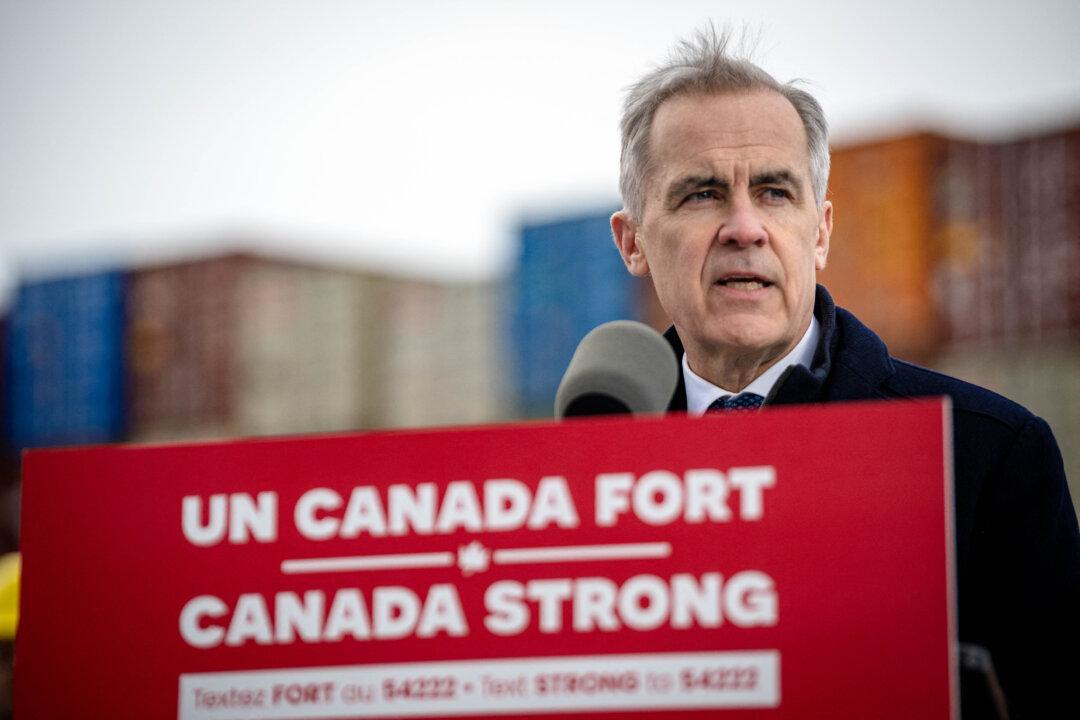The federal government has added seven new entities—five drug cartels and two street gangs—to its list of terrorist organizations as it ramps up its law enforcement posture in response to the U.S. tariff threat.
The United States also designated the same groups as foreign terrorist organizations last week.
These groups have, however, been using extreme violence as they battle for territory and against state forces, doing the most damage in their home countries.
They also have a presence in Canada, where they cooperate with local organized crime groups in illicit activities, including money laundering.
“I can confirm that we do have intelligence that cartels, different cartels, operate in Canada,” RCMP Commissioner Michael Duheme said on Feb. 20 during the terrorist listing announcement.
“There’s also strong intelligence that Canadians have actually moved to Mexico and South America to facilitate the transport of certain commodities into Canada,” he added.
Duheme said the intelligence picture for the listed street gangs is “very similar.”
Criminal Intelligence Service Canada said in its 2024 public report that members of Canada-based organized crime groups travel mostly to Mexico, and to a lesser extent to Colombia, to coordinate with Mexican cartels.
Mexican Cartels
Five Mexican drug cartels were listed as terrorist entities by Ottawa. As a collective phenomenon, they require little introduction, being well-known for wreaking havoc in Mexico with great brutality in turf wars and attacks on state institutions, and as the main conduit for cocaine from South America and synthetic drugs they manufacture from precursors obtained from China.One of the better known and oldest groups is the Sinaloa Cartel. Its former leader Joaquín “El Chapo” Guzmán was caught in Mexico and later extradited to the United States, where he was sentenced to life in prison in 2019.
Public Safety Canada says Sinaloa operates in at least 47 countries worldwide, including in Canada. The cartel has links to organizations that have long been listed as terrorist entities, including the narco-guerilla FARC in Colombia and Lebanese Hezbollah. It has employed tactics such as using armed drones for deadly aerial attacks.
“Sinaloa is one of the oldest criminal organizations in Mexico, and one of the most violent and prolific drug trafficking organizations in the world,” says Public Safety.
The Jalisco Cartel New Generation (Cártel Jalisco Nueva Generación - CJNG) uses similar drone tactics and has also links to FARC. The cartel’s “use of armed drones and other tactics, such as public executions and kidnappings, against communities go beyond intimidation, as they seek to instill terror and depopulate communities to facilitate their takeover of territories and routes,” Public Safety says.
A number of smaller cartels joined forces to form Cárteles Unidos (United Cartels), another newly listed terrorist group, as a means to fight a turf war against against the CJNG. The Mexican military said in December that two of its soldiers were killed by a Carteles Unidos explosive device meant for the CJNG.
The other listed cartels are Cártel del Golfo (CDG) and La Familia Michoacana. CDG has an important presence in northern Mexico where it runs drugs and weapons trafficking.
A faction of CDG kidnapped four U.S. citizens in 2023 who had crossed over to Mexico for a medical procedure. Two of them were killed.
The United States also added the Cártel del Noreste (formerly Los Zetas) to its list of terrorist entities.
Street Gangs

Two groups not defined as cartels and originating outside Mexico were also listed as terrorist entities.
Tren de Aragua (TdA) originated as a prison gang in the state of Aragua, Venezuela. It has been expanding its activities in the Western Hemisphere in recent years. TdA became more widely known in the United States in recent months after it overran an apartment complex in Colorado, and Trump used the case to highlight the problem of crime linked to illegal immigration.
Trump’s border czar Tom Homan was present at the launch of a substantive law enforcement operation earlier this month in Colorado targeting over 100 members of Tren de Aragua. The operation had a limited impact, however, with Homan afterward blaming media leaks for tipping off the gang members.
MS-13
Mara Salvatrucha, also known as MS-13, was formed by Salvadoran immigrants to the United States who were fleeing the civil war in their home country. The gang has had a strong presence in El Salvador, albeit a diminishing one in recent years under the tenure of President Nayib Bukele. Following a gang massacre causing 87 deaths in 2022, Bukele declared a state of emergency that was used for a major crackdown against MS-13 and other gangs.Public Safety Canada says MS-13 evolved from a street gang into a “criminal-economic-military-political power.” It says the group has engaged in widespread targeted killings of law enforcement and state officials and has established military-style training camp for its members.
There have been reported activities of MS-13 in Canada, including a drive-by shooting north of Toronto in 2023, for which three men were charged.







